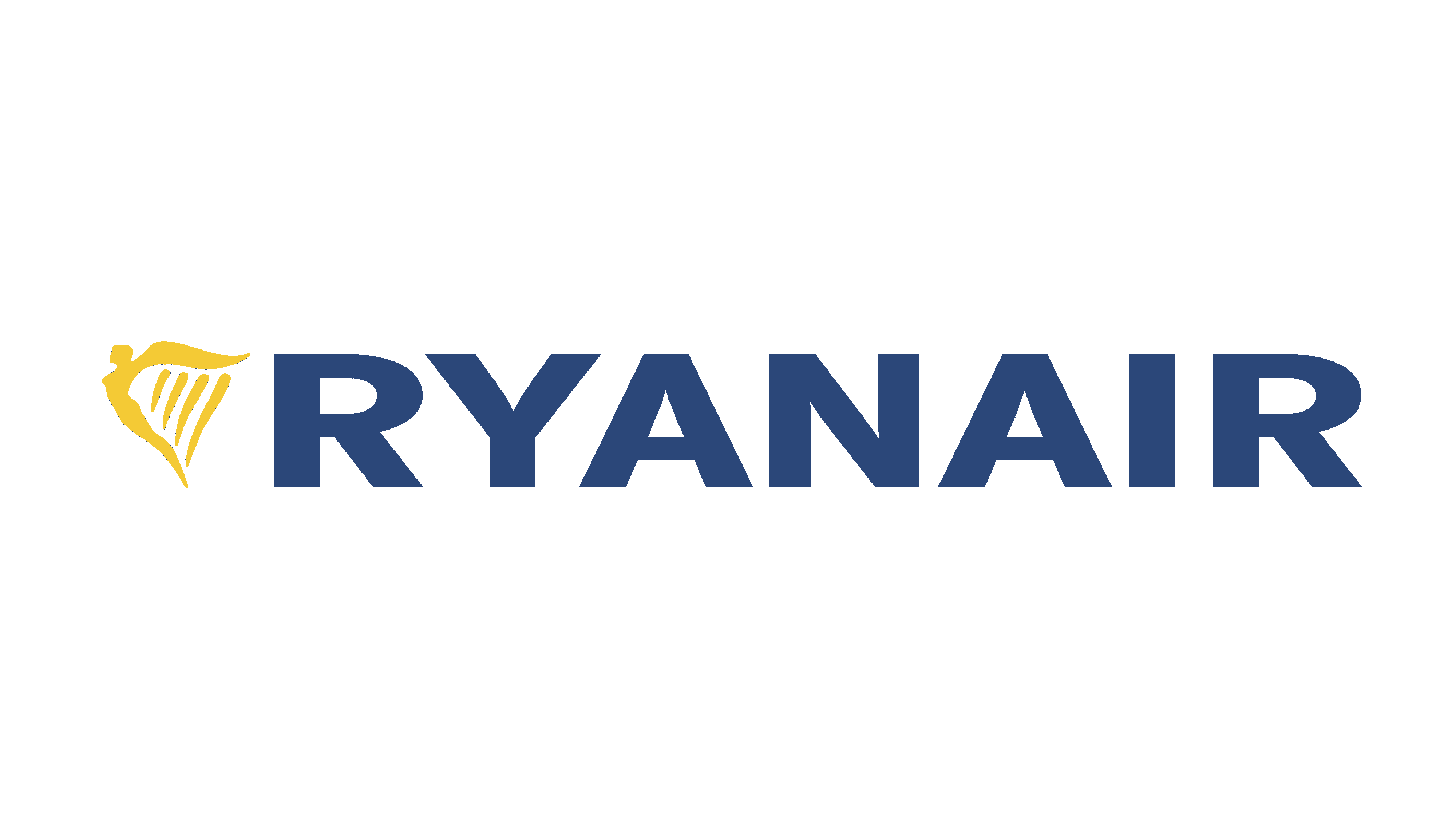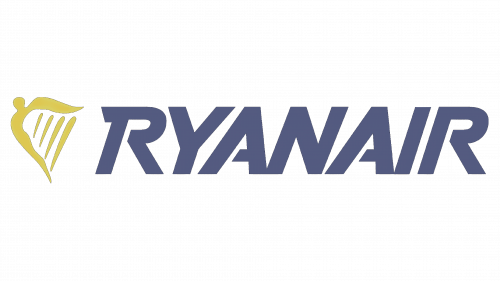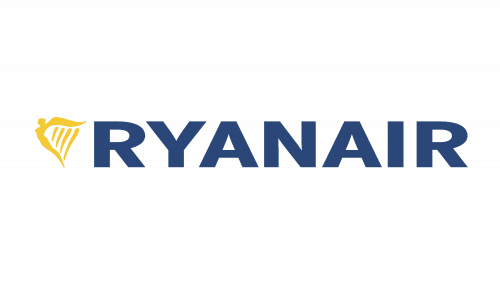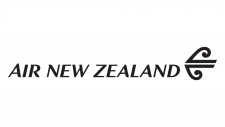Ryanair Logo
Ryanair is the biggest airline in Ireland, and simultaneously one of the biggest in Europe. Their destinations link many major European cities, which includes most countries on this continent. And if you travel anywhere within EU, you’ll likely be seeing these planes a lot, because they are also low-cost.
Meaning and History
The airline was established in Ireland in 1984. Many countries introduce something associated with their homeland into the name, and Ryanair did so too, although in a strange way. It’s literally the name ‘Ryan’ + the word ‘air’. The name in particular is so famously Irish that most people would instantly recognize that the airline must be Irish.
1985 – 1980s
For the first three years of their existence, they used the triskelion emblem as the central piece of their logotype. A triskelion is a Celtic symbol that usually depicts three spirals connected in the middle. Instead of spirals, the airline used the rear parts of the planes – including the tail and a stabilizer colored red and black.
Below, they’ve written their name in the same linear style as the triskelion bit above. The letters consisted of two lines instead of one, which could refer to the take-off paths, probably.
1980s – 1990s
The current emblem is a streamlined iteration of its predecessor. Redundant elements have been shed, allowing for a more visually digestible representation. The previous red accents within the trio of circular “Rs” were eliminated, and the linear patterns within the airline’s moniker were also discarded. Additionally, the designers elevated the “Y” from its previous lowercase stature to an uppercase form, and they distinctively spaced the “N” and “A” on the right, ensuring they seamlessly integrated with the adjacent characters. This refreshed design conveys clarity and simplicity, emphasizing the brand’s evolution and attention to modern aesthetics.
1980s – 1990s
The refreshed emblem bears a striking resemblance to its predecessor. The most prominent shift is seen in the typography: all characters now sport a bolder appearance, with the strokes being substantially more robust, especially when compared to the “R” of the earlier design. Subtle tweaks were made to the typeface as well. The arch of the “R” expanded in a vertical direction, making it more pronounced, whereas the “Y” and “A” took on a slightly more condensed form. Except for the standalone “A”, the entirety of the text leans in an italic fashion, adding a touch of dynamism and fluidity to the overall presentation. This modern iteration subtly communicates evolution while maintaining the essence of the brand’s identity.
1990s – 1990s
The emblem underwent a transformation, albeit subtle. Primarily, a serene blue sky adorned with fluffy white clouds was introduced – an apt representation for an aviation entity. While the typeface underwent tweaks, the essence of the label stayed familiar, ensuring immediate brand recognition. The most notable shift was in the uniformity of the letter heights, abandoning the distinctively long leg of the “R” from prior iterations. This iteration downsized the “R” insignia, laying greater emphasis on the brand’s moniker, signifying both its heritage and evolution as an airline industry leader. The design choices seemed to echo the company’s commitment to innovation while staying true to its roots.
1990s – 1990s
Within this emblem, the most pronounced alterations centered around the airline’s moniker. Consequently, prominent, uniformly sized letters emerged. The design team accentuated the italicized style, giving the letters an airier feel by not fully connecting some of their internal components. Specifically, the horizontal bars in the “R” and “A” don’t extend completely to the other side. The hue of the logo was also updated, transitioning to a rich shade of navy blue, evoking a sense of depth and professionalism. This redesign reflects a blend of modernity and tradition, capturing the airline’s evolving identity while respecting its foundational elements.
1990s – 2001
In 1987, they decided to include another patriotic symbol without being eccentric about it. The emblem was now a national symbol of Ireland – the golden harp of Brian Boru. To the right of it was also the company’s name – Ryanair – in all capital letters. The font was this time some artistic sans-serif that likes to cut letters in weird places.
2001 – 2013
In 2001, they decided to use a simpler image – just the airline’s name in soft, pleasant typeface put inside a rectangular shape. The colors are actually deeper than just designers’ preference. The blue is, unbeknownst to most, Ireland’s national color, and the yellow is directly derived from the good-old harp.
2013 – today
In 2013, they decided to reuse the 1987 logo, but change the font this time. All the weird appendages were removed, and it was now just a mundane sans-serif colored in blue, although the general look stayed.
Emblem and Symbol
Ryanair likes their harps so much they put this emblem twice on each side of their planes. The one is blue and sits right next to the company name in the plane’s middle segment, and the other is all the way back on the stabilizer – colored golden and placed over the blue background.



















